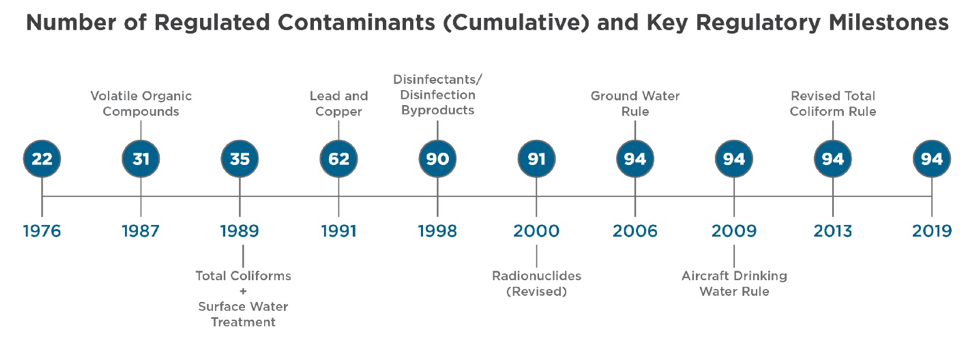The Safe Drinking Water Act: 45 Years of Protection, But More Action Needed
The Safe Drinking Water Act (SDWA) is the federal law that regulates drinking water provided by public water systems. Originally passed by Congress in 1974, and marking its 45th anniversary today, the law represented a major step forward in creating uniform drinking water standards across the country as well as providing a system of oversight and enforcement. Like the Clean Water Act (CWA), responsibility for implementation of the SDWA rests with the U.S. Environmental Protection Agency (EPA) and, to varying degrees, states and tribal governments. For a full overview of the SDWA, see Section 3 of our Drinking Water Guide: A Resource for Advocates.
Recently, increasing concern over drinking water quality has highlighted some of the law’s shortcomings, including:
- Some drinking water contaminants are not regulated. Currently, the Safe Drinking Water Act regulates just over 90 contaminants, but the great majority of these were put in place before Congress made the regulatory process more burdensome in 1996 (see that Section 3, linked above!). There are many more contaminants that threaten public health than are regulated. For example, regulating perchlorate, a known carcinogen from rocket fuel, has been delayed repeatedly. PFAS is currently of major concern in drinking water systems across the country, yet EPA has only issued a health advisory. Many other emerging contaminants also await further study and detection.
- Enforcement is variable and inequitable. A recent report, Watered Down Justice, by NRDC, Coming Clean, and the Environmental Justice Health Alliance, showed that drinking water violations increased in communities of color, low-income communities, and places with more non-English speakers. Additionally, correcting these problems was found to take longer in these communities, amplifying already high and inequitable environmental burdens.
Local and state groups and their partners are successfully working to fill in the gaps in some places, securing a strong state Lead and Copper Rule in Michigan, a major new funding source for clean and affordable water in California, and PFAS standards in a number of states. Partnerships like the Source Water Collaborative have advanced successful strategies for how to prevent drinking water contamination, including use of related laws like the Clean Water Act.
While the SDWA has provided many safeguards against drinking water contamination over the last 45 years, potential threats to the health and safety of our drinking water supplies remain, including unregulated contaminants, deteriorating water infrastructure, and oversight failures. We need increased funding for drinking water systems and these dollars must be spent in a way to protect all of us, but must first address communities and people already most at-risk.






